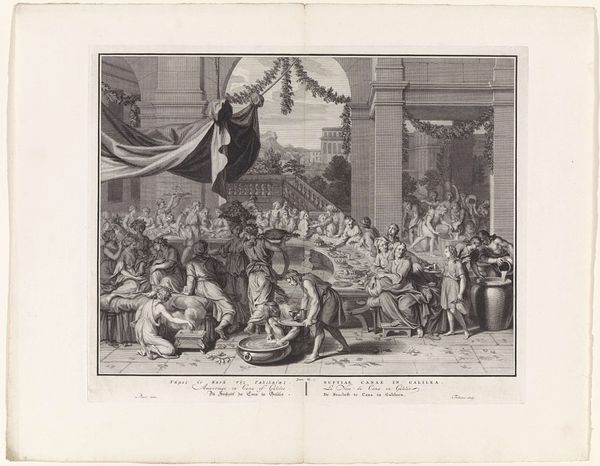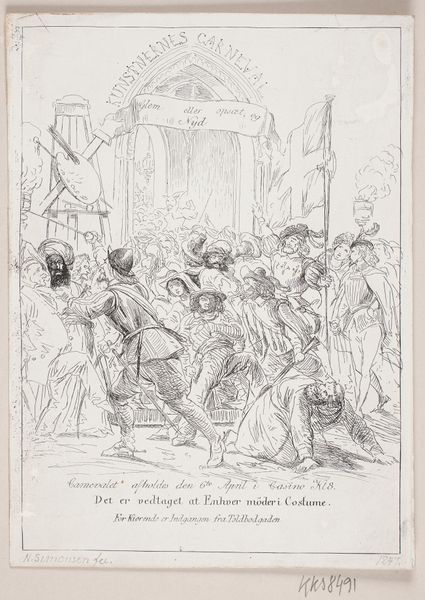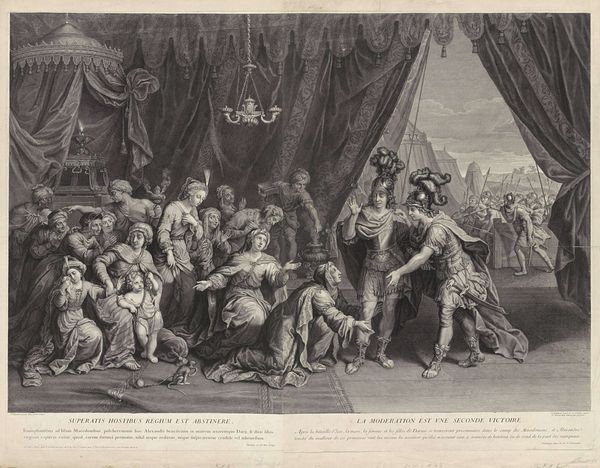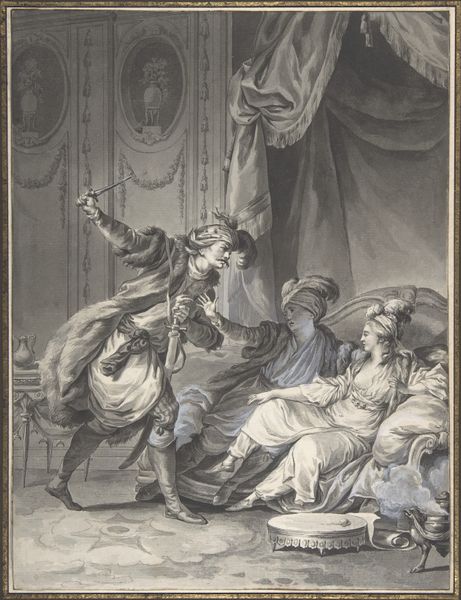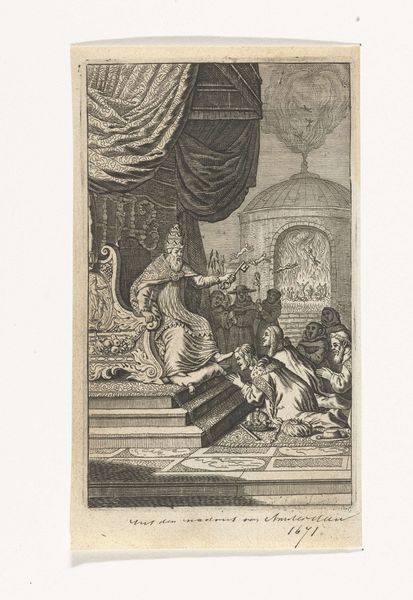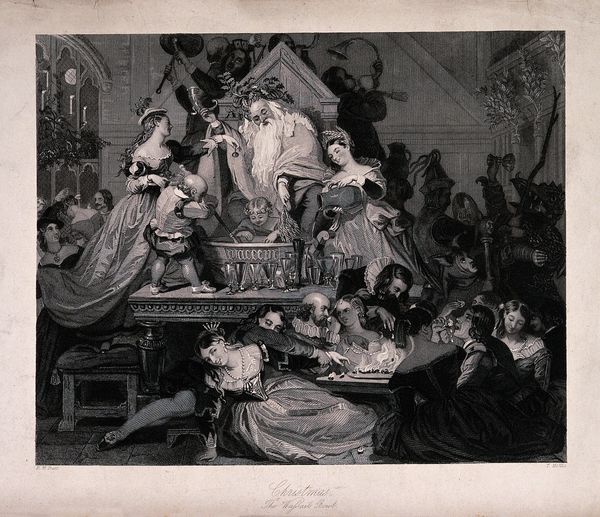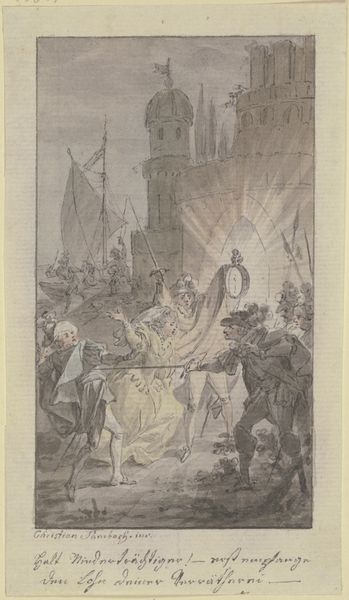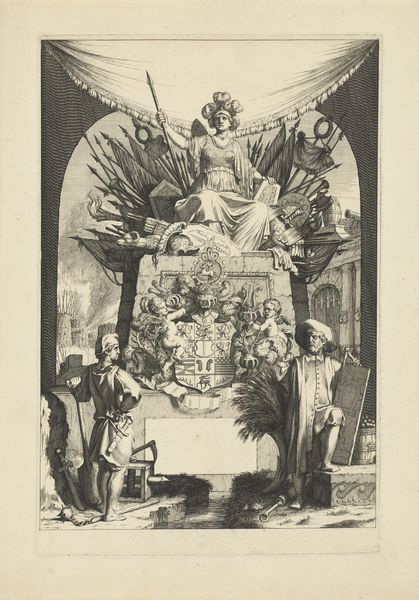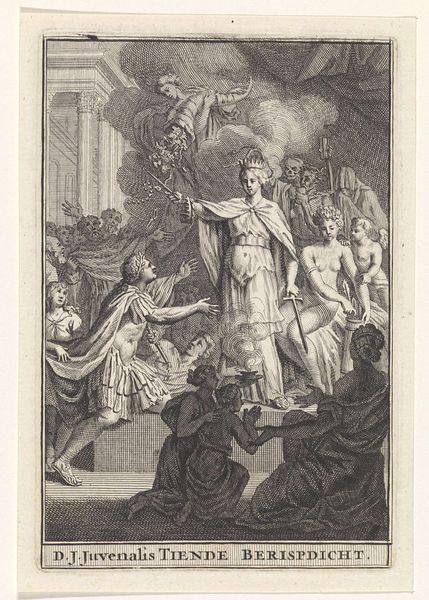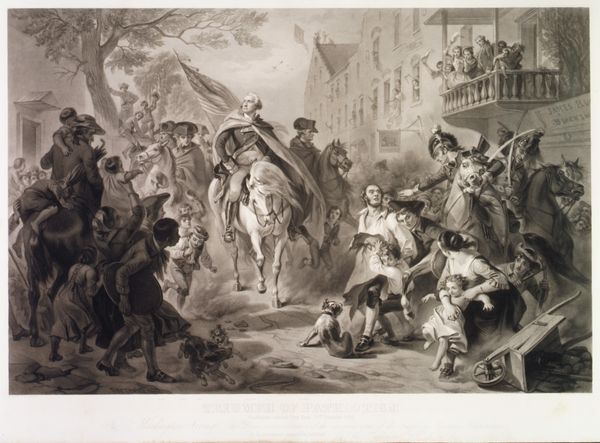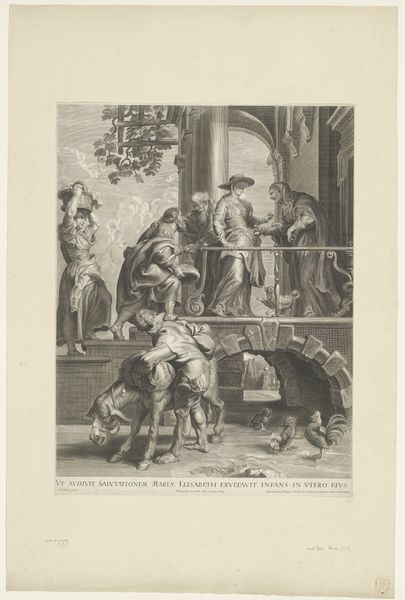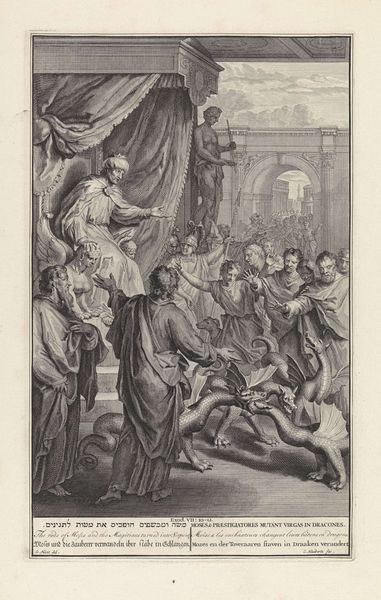
print, etching
#
narrative-art
#
baroque
# print
#
etching
#
charcoal drawing
#
figuration
#
charcoal art
#
pencil drawing
#
history-painting
#
charcoal
Dimensions: height 533 mm, width 445 mm
Copyright: Rijks Museum: Open Domain
Editor: Here we have Rembrandt van Rijn’s etching, "Christ before Pilate: large plate", created in 1635. It’s currently held at the Rijksmuseum. I’m immediately struck by the drama and the almost theatrical lighting. There’s such incredible detail, and the emotional weight is palpable, wouldn't you agree? How do you interpret this work? Curator: Oh, absolutely. This piece truly whispers of drama and weighs heavy on the soul. Notice how Rembrandt masterfully uses light and shadow. Isn't it as if the artist is directing a play, spotlighting Christ’s vulnerability while cloaking Pilate and the baying crowd in darkness? That vast empty space feels incredibly loaded, doesn't it? Editor: It really does. It almost feels like a missing piece, like the narrative is somehow incomplete or uncertain. What was Rembrandt trying to say? Curator: Well, etchings like these were essentially early forms of mass communication. Rembrandt often explored moral complexities. This particular piece invites reflection on power, injustice, and perhaps even the viewer's own role in judgement. See how the onlookers aren't passive observers? They're active participants, which implicates the audience and the observer! It’s deeply unnerving. Does it resonate with you as much as it does with me? Editor: Definitely, the crowd feels so involved, and not in a good way. I find myself wondering, if I were there, would I be shouting with them? Curator: Ah, isn’t that the timeless question, the chilling truth? Rembrandt forces us to confront the uncomfortable corners of our shared humanity. He captures not just the historical moment, but also a reflection of ourselves and how little humanity changes in two millennia. Editor: I hadn't thought about it that way. It really is incredible how relevant it still feels centuries later. Curator: It's like looking into a mirror reflecting back a stark image of society! Food for thought indeed!
Comments
No comments
Be the first to comment and join the conversation on the ultimate creative platform.
